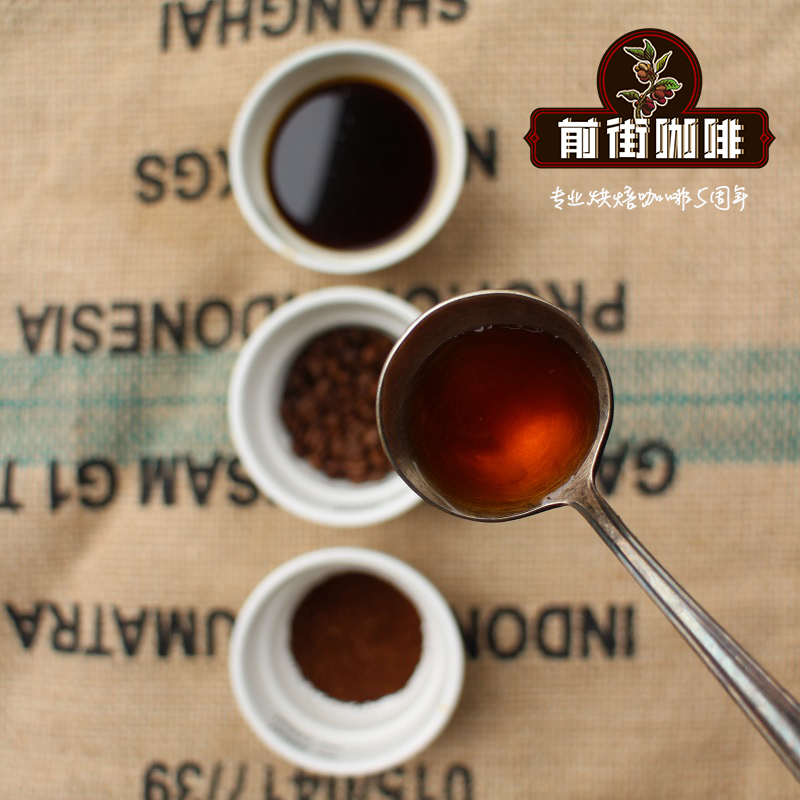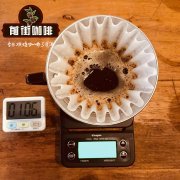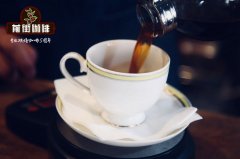Artificial harvesting in Chaximayo production area of Chanchmayo, Peru | Elaraby with organic cultivation and washing treatment

Professional coffee knowledge exchange more coffee bean information please follow the coffee workshop (Wechat official account cafe_style)
Artificial harvesting in Chaximayo area of Chanchmayo, Peru | the flavor of Arabica coffee beans grown organically and washed?
Peruvian coffee beans are produced in La Florida, located in the northeastern highlands of the Andes Mountains. This is the most famous Chanchamayo among the nine coffee producing areas in Peru. It is a high-altitude rain woodland. Its coffee garden is in the middle of 1200m, with an average annual temperature of 17-30 degrees and annual rainfall of 1500-2000 mm. It is a good place to grow coffee. The two most famous planting areas in this area are Villa Rica and La Merced respectively, and the main planting variety is Typica Arabica. The history of coffee cultivation in Peru can be traced back to 1930, when a group of German immigrants settled in what is now the Villa Rica area and started the economic activities of coffee cultivation, which also brought new cultural injection to the region and developed special new cultural characteristics of the region. In memory of these new residents from afar, it was designated as "Settler'" on June 26th every year. S Day (anniversary of new immigrants). Nowadays, there are many local coffee farmers who are descended from these immigrants, and they continue to operate these precious coffee farms from generation to generation! In fact, La Florida is a cooperative, founded in 1965 by 100 farmers, has grown to nearly 1200 farmers, almost each family only grows 2 to 3 hectares of coffee land. In their coffee plantations, which use only natural fertilizers instead of synthetic fertilizers, herbicides and pesticides, the cooperative has its own technical teams, small lending institutions for housewives to support their families, and small medical centers. Funds have also been set up to buy cooperative coffee processing machines.
Peruvian coffee beans are planted and harvested artificially. After harvesting ripe coffee fruits, peel and pulp are removed, then washed and fermented with water. After fermentation, the natural sun method is used to prevent beans from being contaminated with soil and other sundries. Its sweet and sour taste, very few miscellaneous flavor is quite clean, for South American beans, the texture is quite excellent.
Villarica is a bustling eastern Andean town with a large area of rich ecological conservation forests and a well-known bird sanctuary. It is amazing to find that 400 species of birds inhabit in Villa Rica! Thus it can be seen that Villarica is a coffee producing area that is very friendly to the natural environment-coffee is planted at an altitude of about 1500m, with an average annual temperature of 20 degrees and an annual rainfall of about 1800 mm. It is very suitable for the growth of coffee trees. Farmers adopt organic composting and planting, the variety is mainly Typica (Tiebika), the quality of raw beans is very stable, and the harvest period lasts from April to September every year. The raw beans are washed and fermented after harvest and dried in the natural sun. The coffee produced in the Villa Rica area has a special creamy nutty aroma, warm and soft taste, good sweetness, and slightly rising fruit acids in the latter section can bring a comfortable aftertaste.
The town is located 350km north of Lima. This area is covered with mountains and jungles. Although it is located in the tropical rain forest, it grows high above sea level and maintains a suitable annual temperature and rainfall. It is the most famous and best-quality coffee-producing region in Peru. Most small coffee farmers in Peru own only about two hectares of farmland each; because they are poor and cannot afford to buy chemical fertilizers or pesticides, almost all of them are organic farming and process and sell their output through the form of cooperatives. Generally speaking, Peruvian coffee is characterized by a full and balanced taste, so it is very suitable as part of the formula beans.
Planting altitude: 800-1100 masl. (Meters Above Sea Level) 800-1000 m above sea level
Annual rainfall: 6-1400 mm pplink y
Variety: Typica and Caturra
Certification: Organic Organic
Treatment method: Washed washing
A fruit tree called "INGA", commonly known locally as Pacay, is widely planted in the planting area, which not only provides good shade, but also provides birds for foraging during the flowering and fruiting season.
Small farmers have organized producers' cooperatives to weave a complete sales mechanism of raw beans.
Almost every farm has perfect raw bean processing equipment to facilitate the best processing time after coffee cherry harvest.
The cooperative provides re-refining and grading screening, and the coffee raw beans are bagged completely and exported directly to buyers of various countries, effectively striving for the storage validity of raw beans and avoiding the possible damage to the quality of raw beans caused by improper storage environment that may occur after transportation is concentrated in the port of Lima (Lima).
Cooperatives have long been in line with international coffee organizations and are committed to fair trade and the implementation of organic growth. at present, Villa Rica is the second largest organic fair trade coffee producing area in the world.
The farm plans to replace the seedlings under the optimal fruit production years of coffee trees in order to maintain the trade of high-quality coffee.
Effective use of coffee cherry pulp and fermented organic matter waste water for organic composting and then used for planting virtuous cycle.
Qianjie recommended cooking:
Filter cup: Hario V60
Water temperature: 90 degrees
Degree of grinding: small Fuji 3.5
Cooking methods: the ratio of water to powder is 1:15, 15g powder, the first injection of 25g water, 25 s steaming, the second injection to 120g water cut off, waiting for the powder bed water to half and then water injection, slow water injection until 225g water, extraction time about 2:00
Analysis: using three-stage brewing to clarify the flavor of the front, middle and back of the coffee. Because the V60 has many ribs and the drainage speed is fast, it can prolong the extraction time when the water is cut off.
Important Notice :
前街咖啡 FrontStreet Coffee has moved to new addredd:
FrontStreet Coffee Address: 315,Donghua East Road,GuangZhou
Tel:020 38364473
- Prev

Introduction to the characteristics of coffee beans in AA-Songea producing area of Tanzania _ how to bake coffee beans in Tanzania
Professional coffee knowledge exchange more coffee bean information please follow the coffee workshop (Wechat official account cafe_style) Tanzania is located in eastern Africa, south of the equator, Mount Kilimanjaro, Africa's highest peak, is located in this country. Most of the country's high-quality coffee comes from around Mount Kilimanjaro in the north and has a flavor similar to Kenyan coffee. However, the coffee beans recommended by the author
- Next

Starbucks selects Coffee Bean Story of Chaga Manor in Tanzania traditional cultivation of Coffee beans
Professional coffee knowledge exchange more coffee bean information please follow the coffee workshop (Wechat official account cafe_style) Tanzania Chaga production area: Africa Tanzania processing method: washing method alcohol: medium acidity: medium variety: bourbon, Kent and Niassa flavor: floral aroma accompanied by orange peel and warm spicy flavor with food: orange, cinnamon altitude
Related
- Detailed explanation of Jadeite planting Land in Panamanian Jadeite Manor introduction to the grading system of Jadeite competitive bidding, Red bid, Green bid and Rose Summer
- Story of Coffee planting in Brenka region of Costa Rica Stonehenge Manor anaerobic heavy honey treatment of flavor mouth
- What's on the barrel of Blue Mountain Coffee beans?
- Can American coffee also pull flowers? How to use hot American style to pull out a good-looking pattern?
- Can you make a cold extract with coffee beans? What is the right proportion for cold-extracted coffee formula?
- Indonesian PWN Gold Mandrine Coffee Origin Features Flavor How to Chong? Mandolin coffee is American.
- A brief introduction to the flavor characteristics of Brazilian yellow bourbon coffee beans
- What is the effect of different water quality on the flavor of cold-extracted coffee? What kind of water is best for brewing coffee?
- Why do you think of Rose Summer whenever you mention Panamanian coffee?
- Introduction to the characteristics of authentic blue mountain coffee bean producing areas? What is the CIB Coffee Authority in Jamaica?

